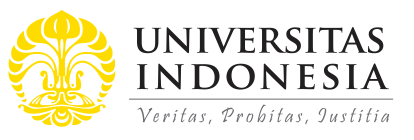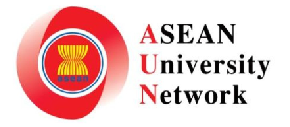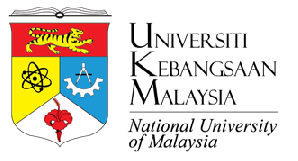
Abstract
In order to achieve high-quality healthcare, patient safety should be improved and monitored regularly. Moreover, accreditation on healthcare facilities is being requested in recent years. Mobile application can serve as a tool for community healthcare centre’s (Puskesmas) to assess their accreditation score, especially patient safety. To provide as a tool for self-monitoring for patient safety elements. This is a case-based article focuses on the development of smartphone application using the input-process-output-outcome scheme as the framework. We reviewed regulation of health minister on Puskesmas accreditation and developed a checklist and scoring for patient safety components. This is the first mobile application that targeted Puskesmas staff to improve their quality of care in patient safety based on accreditation criteria. The application is publicly available in Google Play Store. We promoted the application among Puskesmas staff and asked for their evaluation using Google Form. About 20 Puskesmas responded and showed positive response. This smartphone application serves as self-monitoring tool for Puskesmas to complete accreditation criteria as mentioned in Permenkes No 46 Year 2015. We would promote the use of this application to wider Puskesmas community.
References
Boulos, M. N., Brewer, A. C., Karimkhani, C., Buller, D. B., & Dellavalle, R. P. (2014). Mobile medical and health apps: state of the art, concerns, regulatory control and certification. Online Journal of Public Health Informatics, 5(3), e229. https://doi.org/10.5210/ojphi.v5i3.4814
BPJS Kesehatan. (2017, June). Laporan Pengelolaan Program dan Laporan Keuangan Jaminan Sosial Kesehatan. Retrieved from https://bpjs-kesehatan.go.id/bpjs/dmdocuments/b39df9ae7a30a5c7d4bd0f54d763b447.pdf
Braun, B.I., Owens, L.K., Bartman, B.A., Berkeley, L., Wineman, N., & Daly, C.A. (2008). Quality-related activities in federally supported health centers: do they differ by organizational characteristics? J Ambulatory Care Manage, 31, 303–318. https://dx.doi.org/10.5455%2Faim.2013.21.176-179
Buetow, S.A., & Wellingham, J. (2003). Accreditation of general practices: challenges and lessons. Qual Saf Health Care, 12, 129–135. https://doi.org/10.1136/qhc.12.2.129
Darzi, A. (2008, June). High quality care for all: NHS Next Stage Review Final Report. Department of Health. Retrieved from https://assets.publishing.service.gov.uk/government/uploads/system/uploads/attachment_data/file/228836/7432.pdf
DKI Jakarta local government (n. d.). Daftar Puskesmas [List of Puskesmas]. Retrieved from: https://surveilans-dinkesdki.net/puskesmas.php
Ekawati, F. M., Claramita, M., Hort, K., Furler, J., Licquirsh, S., & Gunn, J. (2017). Patients’ experience of using primary care services in the context of Indonesian universal health coverage reforms. Asia Pac Fam Med, 16(4), 1-10. https://apfmj.biomedcentral.com/articles/10.1186/s12930-017-0034-6
El-Jardali, F., Hemadeh, R., Jaafar, M., Sagherian, L., El-Skaff, R., Mdeihly, R., & Ataya, N. (2014). The impact of accreditation of primary healthcare centers: Successes, challenges and policy implications as perceived by healthcare providers and directors in Lebanon. BMC Health Services Research, 14(1), 1–10. https://doi.org/10.1186/1472-6963-14-86
Institute of Medicine US Committee on Quality of Health Care in America. (2000). Errors in health care: a leading cause of death and injury. In L. Kohn, J. Corrigan, & M. Donaldson (Eds.), To Err is Human. Washington DC: National Academies Press.
Jaafaripooyan, E., Agrizzi, D., & Akbari-Haghighi, F. (2011). Healthcare accreditation systems: further perspectives on performance measures. International Journal for Quality in Health Care, 23(6), 645-656. https://doi.org/10.1093/intqhc/mzr063
Kapur, N. (2015). Accreditation of services would improve patient safety. BMJ, 351, h4420.
Lawati, M. H. A., Dennis, S., Short, S. D., & Abdulhadi, N. N. (2018). Patient safety and safety culture in primary health care: a systematic review. BMC Fam Pract, 19, 104.
Lewis, T. L., & Wyatt, J. C. (2014). MHealth and mobile medical apps: A framework to assess risk and promote safer use. J Med Internet Res, 16(9), e210. https://doi.org/10.2196/jmir.3133
Lu, C., Hu, Y., Xie, J., Fu, Q., Leigh, I., Governor, S., & Wang, G. (2018). The use of mobile health applications to improve patient experience: cross-sectional study in Chinese public hospitals. JMIR Mhealth Uhealth, 6(5), e126. https://doi.org/10.2196/mhealth.9145
Marchon, S.G., & Mendes, W. V. Jr. (2014). Patient safety in primary health care: a systematic review. Cad Saude Publica, 30, 1815-1835. https://doi.org/10.1590/0102-311x00114113
Ministry of Health. (2017). Laporan akuntabilitas kinerja instansi pemerintah [report of accountability performance of government institution]. Retrieved from: http://yankes.kemkes.go.id/app/lakip2/downloads/2017/KP/ditjen/lakip_ditjen_2017.pdf
Ministry of Health. (2018). Data dan informasi – profil kesehatan Indonesia. [Data and information – health profile of Indonesia]. Retrieved from https://www.depkes.go.id/resources/download/pusdatin/profil-kesehatan-indonesia/Data-dan-Informasi_Profil-Kesehatan-Indonesia-2018.pdf
Ozdalga, E., Ozdalga, A., & Ahuja, N. (2012). The smartphone in medicine: a review of current and potential use among physicians and students. J Med Internet Res, 14(5), e128. https://doi.org/10.2196/jmir.1994
Paccioni, A., Sicotte, C., & Champagne, F. (2008). Accreditation: a cultural control strategy. Int J Health Care Qual Assur, 21, 146–158. https://doi.org/10.1108/09526860810859012
Putri, N. E. (2014). Efektivitas Penerapan Jaminan Kesehatan Nasional melalui BPJS dalam Pelayanan Kesehatan Masyarakat Miskin di Kota Padang. Tingkap, 10(2), 175–189. http://ejournal.unp.ac.id/index.php/tingkap/article/view/4421
Peraturan Menteri Kesehatan 2015 No 46. Akreditasi Puskesmas, Klinik Pratama, Tempat Praktik Mandiri Dokter, dan Tempat Praktik Mandiri Dokter Gigi. [Accreditation of Community Health Centre, Private Clinic, Independent Practice for Doctors and Dentists].
Peraturan Menteri Kesehatan 2017 No 11. Keselamatan pasien. [Patient safety]
Qiang, C. Z., Yamamichi, M., Hausman, V., & Altman, D. (2011). Mobile Applications for the Health Sector. World Bank Documents & Reports - Abstracts, 1–61.
Santosa, H., & Malek, N. M. (2011). penilaian kualitas pelayanan pusat kesehatan masyarakat di wilayah Sumatera Utara , Indonesia. [Quality assessment on health service in community health centre in North Sumatra, Indonesia]. Jurnal Manajemen Pelayanan Kesehatan, 14(01), 49–54.
Shaw, C. D., Groene, O., Botje, D., Sunol, R., Kutryba, B., & Klazinga, N. (2014). The effect of certification and accreditation on quality management in 4 clinical services in 73 European hospitals. Int J Qual Health Care, 26, 100-107. https://doi.org/10.1093/intqhc/mzu023
Statista. (2019, February 19). Number of smartphone users in Indonesia from 2011 to 2022 (in millions). Retrieved from https://www.statista.com/statistics/266729/smartphone-users-in-indonesia/
Ventola, C. L. (2014). Mobile devices and apps for health care professionals: uses and benefits. P & T, 39(5), 356–364. https://www.ncbi.nlm.nih.gov/pmc/articles/PMC4029126/
World Health Organization. (2003). Quality and accreditation in health care services. Retrieved from http://www.who.int/hrh/documents/en/quality_accreditation.pdf
World Health Organization. (2017). Patient Safety: Making health care safer. Geneva: World Health Organization. Retrieved from http://apps.who.int/iris/bitstream/handle/10665/255507/WHO-HIS-SDS-2017.11-eng.pdf?sequence=1
Recommended Citation
Khoe, Levina Chandra; Pramastuty, Ajeng; Sabarguna, Boy Subirosa; and Herqutanto, Herquranto
(2019).
Patient safety smartphone application for quality Assurance in primary healthcare facilities.
ASEAN Journal of Community Engagement, 3(2).
Available at: https://doi.org/10.7454/ajce.v3i2.1064







